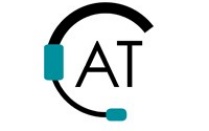Full citation
Morton, S. C., Brookes, N. J., Dainty, A. R. J., Blackhouse, C. J. & Burns, N. D. (2006). The Role of Social Relationships in Improving Product Development Decision Making. Journal of Engineering Manufacture, 220(6), 1017-1024.
Format: Peer-reviewed article
Type: Research — Non-experimental
Experience level of reader: Fundamental
Annotation: The authors of this study identify correlations between effective Product Development employee relationships and trust, loyalty, respect, relationship longevity, common backgrounds and wider social contexts. They further conclude that if product development employees have effective relationships then information will flow easily and new product development decision making will by more effective.
Setting(s) to which the reported activities/findings are relevant: Federal lab, Large business, Small business (less than 500 employees)
Knowledge user(s) to whom the piece of literature may be relevant: Manufacturers
Knowledge user level addressed by the literature: Organization
This article uses the Commercial Devices and Services version of the NtK Model
Primary Findings
Carrier: Choose product development team members who trust, respect and are loyal to each other because this will create effective relationships and increase information flow. Also look for longevity of product developer relationships, shared common backgrounds and wider social contexts.
Survey. Positive correlations were found between effective product development relationships and trust, respect, loyalty, longevity, common backgrounds and social contexts at the .01 level.
Occurrence of finding within the model: Step 4.1
Secondary Findings
Tip: Choose product development team members who had good personal relationships, as they have been linked to successful product development. Relationships that have lasted a long time and have experience with many project cycles and changes in the organizational structure will be most effective. (Brookes et al. [2001], Smart et al. [2002], Morton et al. [2002])
Occurrence of finding within the model: Step 4.1
